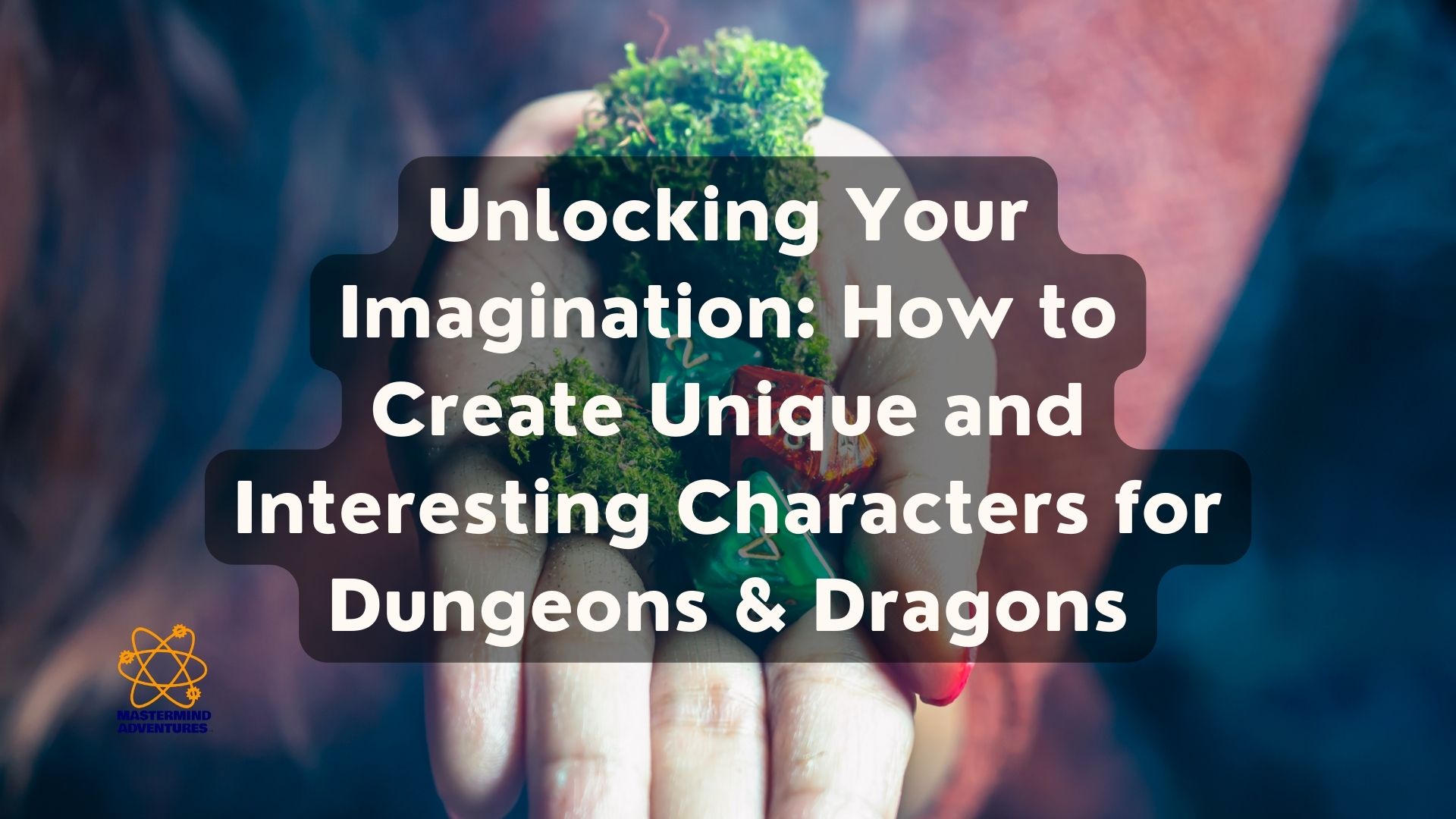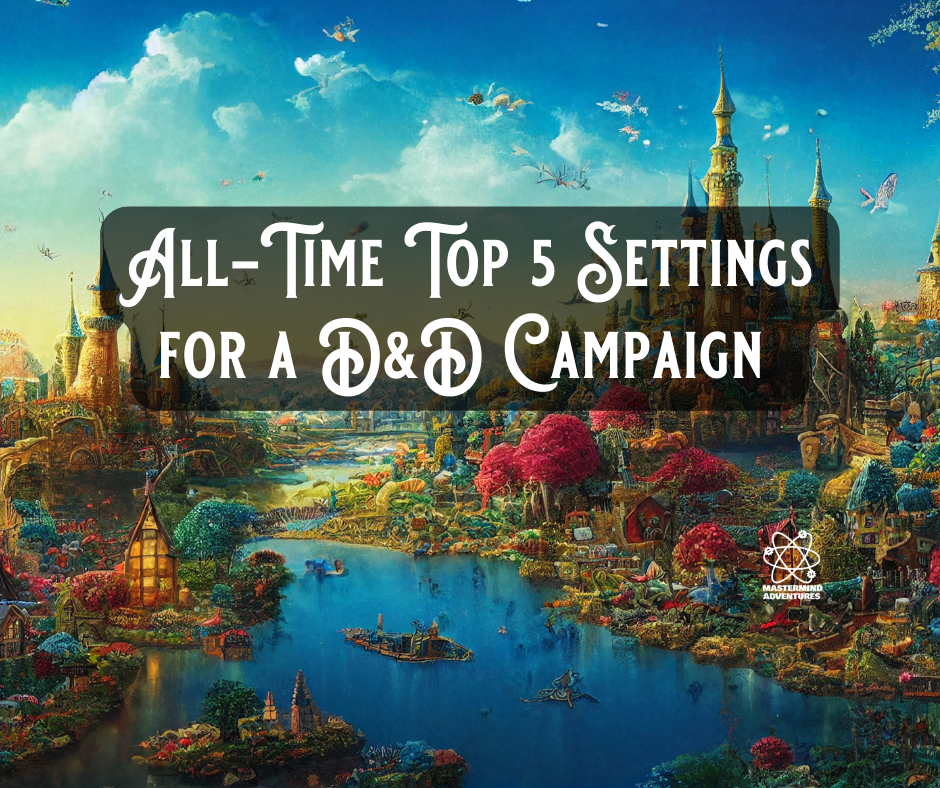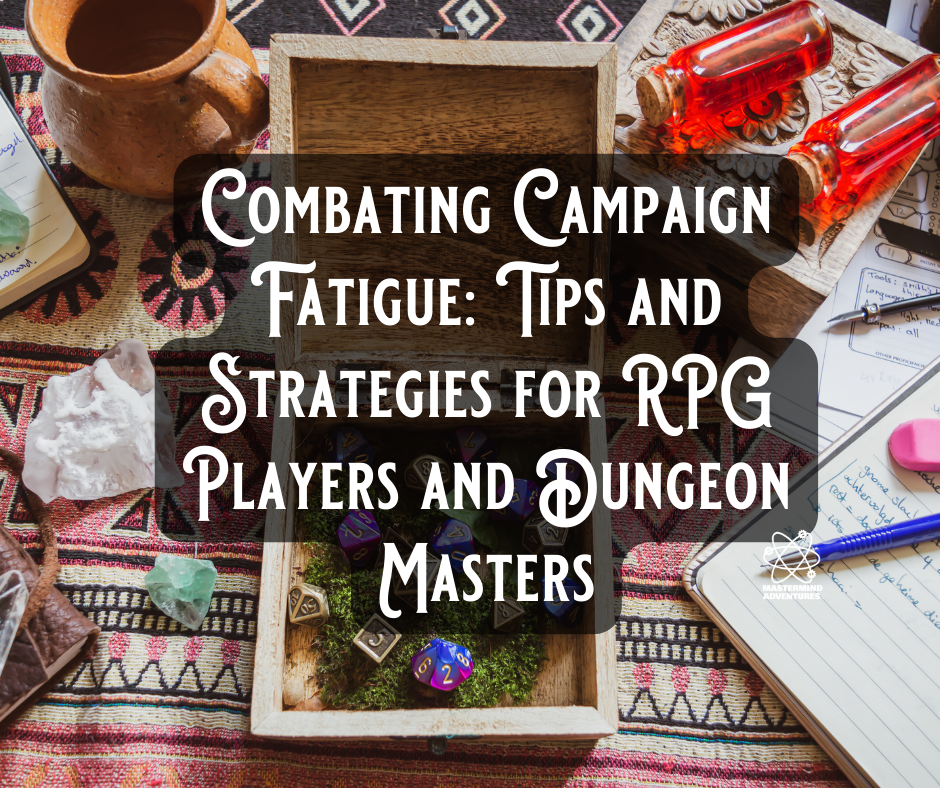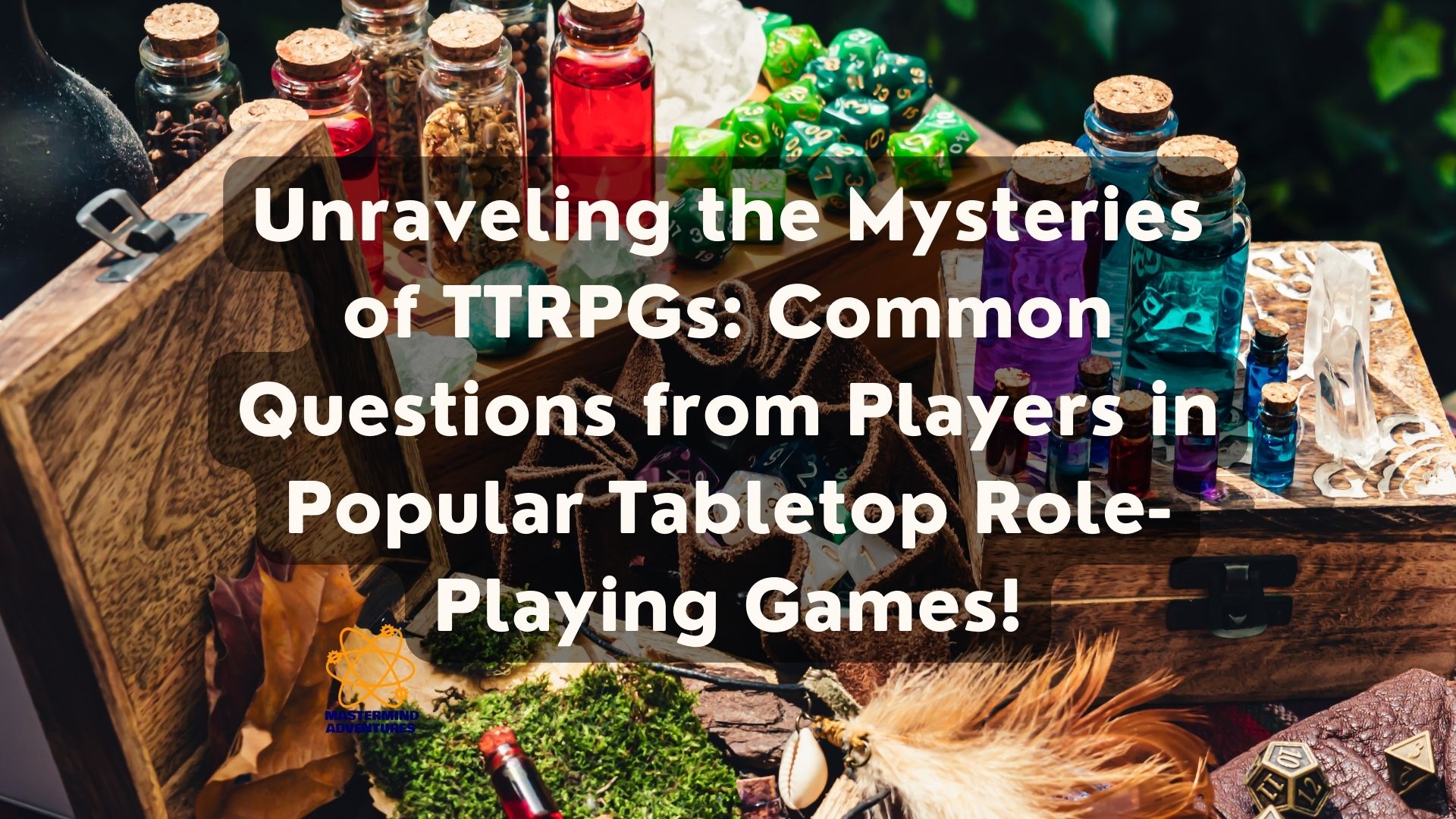Whether you are new to playing tabletop role playing games like Dungeons & Dragons (D&D) or a seasoned veteran, making a new character can be an exciting experience that can help you flex your imagination and get the most out of your tabletop gaming sessions.
Arguably, one of the most exciting aspects of D&D is creating your own character, who will embark on epic adventures and engage in thrilling battles. While the rules and mechanics of the game are important, the key to a truly memorable D&D experience lies in the characters you bring to life. If you need hands-on help creating your character, the Mastermind Game Masters are happy to help. But if you want to give it a go on your own, we’ve put together some great tips that will get your creative juices flowing.
In this blog post, we will explore how to think creatively and create unique, interesting, and surprising characters for D&D that are fun to play.
Embrace the Power of Imagination
D&D is a game that allows for boundless creativity. When creating a character, let your imagination run wild. Don’t be afraid to think outside the box and come up with unconventional ideas. Instead of defaulting to a generic human fighter, consider playing a sentient tree druid, a mischievous gnome bard, or a charismatic tiefling sorcerer. One interesting way to do this is by combining opposing character traits into your build. The possibilities are endless, so take advantage of the freedom to create a character that is truly unique and reflects your own creative vision.
Develop a Compelling Backstory
A character’s backstory is the foundation of their personality, motivations, and experiences. It’s an essential element that brings depth and complexity to your character. When crafting your character’s backstory, think beyond the typical cliches and tropes (I’m looking at you, orphan backstory). Consider their childhood, family, upbringing, and past experiences that have shaped who they are today. Real people have both mundane and unique things happen to shape who they become. Think about their fears, dreams, and aspirations. Consider some of your favorite characters from books – especially those who have more gray in their past instead of just black and white. Give them a rich and layered backstory that provides hooks for the Dungeon Master (DM) to incorporate into the campaign and allows you to roleplay with depth and authenticity.
Embody Unique Personality Traits
The personality of your character is what sets them apart from others in the game world. Avoid generic and one-dimensional personalities, and instead, think about what makes your character truly unique. Are they quirky, sarcastic, or shy? Do they have a particular sense of humor or a distinct way of speaking? What are their quirks, mannerisms, and habits? Consider their values, beliefs, and how they interact with others. A well-defined personality adds depth to your character and makes them more engaging to play. Be sure to draw on your backstory to help inspire ideas for these traits.
Explore Unconventional Races and Classes
In D&D, players can choose from a wide variety of races and classes, each with their own unique abilities and traits. Instead of opting for the typical race and class combinations, consider exploring more unusual options. Play a gnome barbarian, a half-orc bard, or a dragonborn rogue. Mixing and matching races and classes can lead to surprising and intriguing character concepts that are fun to play and create memorable moments in the game.
Embrace Flaws and Quirks
Flaws and quirks make characters more interesting and relatable. Nobody is perfect, and flaws add depth and complexity to your character. Think about what flaws or quirks your character may have. Are they afraid of the dark, clumsy, or overly competitive? Do they have a peculiar obsession or an annoying habit? Flaws and quirks can create opportunities for roleplaying and character development, and they make your character feel more real and three-dimensional.
Collaborate with Your DM and Other Players
D&D is a collaborative game, and working with your DM and fellow players can lead to exciting character ideas. Discuss your character concepts with your DM and ask for their input and suggestions. They may have ideas for how your character can fit into the campaign world or provide hooks for future storylines. Additionally, brainstorming with other players can lead to interesting character interactions and dynamic party dynamics. Collaborating with others can spark new ideas and enhance your character creation process.
Think Beyond Stereotypes
When creating a character for D&D, it’s important to challenge stereotypes and avoid cliches. Instead of relying on typical fantasy archetypes, try to think outside the box and come up with unique and original ideas. For example, instead of playing a traditional brooding lone wolf rogue, consider a charismatic and suave rogue who uses their wit and charm to navigate social situations. Avoid falling into the trap of playing a character that is overly predictable or one-dimensional. Embrace diversity and inclusivity in your character creation by representing different genders, ethnicities, sexual orientations, and abilities. Creating characters that break free from stereotypes can lead to more interesting and inclusive storytelling.
Incorporate Unique Backstory Details
Small details in your character’s backstory can make a big difference in their uniqueness. Think about incorporating surprising details that set your character apart. Perhaps your gnome wizard has an irrational fear of chickens, or your half-elf ranger collects rare seashells from all over the world. These small quirks can add depth and complexity to your character, provide opportunities for roleplaying, and make your character more memorable and enjoyable to play.
Create Dynamic Relationships
A character’s relationships with other characters in the game can greatly impact their story and gameplay experience. When creating your character, think about their relationships with other PCs (player characters) and NPCs (non-player characters). What are their bonds, friendships, rivalries, or even romantic interests? How do they interact with others? Do they have a mentor or a sworn enemy? Developing meaningful relationships can create interesting dynamics within the party and add depth to your character’s story.
Embrace Character Growth and Development
Characters in D&D are not static; they grow and evolve over time. Embrace the opportunity for character development and arc throughout the campaign. Think about your character’s goals, desires, and motivations and how they might change as they go through different experiences. Allow your character to face challenges, make mistakes, and learn from them. Character growth adds depth and complexity to your character and makes the game more engaging and rewarding.
—-
Creating unique, interesting, and surprising characters for D&D is a process that requires creativity, imagination, and a willingness to break free from conventions. Embrace the power of imagination, develop a compelling backstory, embody unique personality traits, explore unconventional races and classes, embrace flaws and quirks, collaborate with your DM and other players, think beyond stereotypes, incorporate quirky backstory details, create dynamic relationships, and embrace character growth and development. Remember that the goal is to create a character that is not only fun to play, but also adds depth and richness to the storytelling experience.
Let your creativity soar and bring forth characters that will leave a lasting impression on your D&D adventures!








Leave A Comment